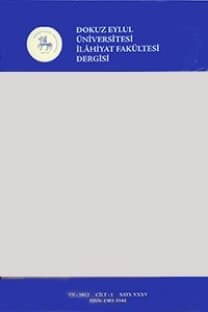KUR’ÂN KIRÂATLERİNDEKİ İHTİLAFLAR VE MANAYA ETKİLERİ: BAKARA SÛRESİ ÖZELİNDE SEMÎN ELHALEBÎ ÖRNEĞİ
Kur’ân’daki bütün mütevâtir kırâatler, üstünlük yönünden aynı seviyededir ve esâsen sadece dinlemeye ve ağızdan ağıza nakle dayanır. Kırâatlerin varoluşunun temeli de budur. Kırâatler iki çeşittir: Birincisi, mütevâtir kırâatlerdir ki Ümmet bunların güvenilirliği noktasında ittifak etmiştir. Bunlar da yedi veya on tanedir. İkincisi, şâz kırâatlerdir. Böylece toplamda yirmiyi aşkın kırâate ulaşmaktadırlar. Zira her biri Hz. Peygamber’den (sas) alınmış ve nakledilmiştir. Fikrî olgunlaşmaları açısından her kırâat çeşidi bağımsız bir âyet yerindedir. Âyetlerdeki gerçek Kur’ânî manalar, tam olarak ancak Hz. Peygamber’den (sas) geldiği sabit olan kırâat çeşitlerini bir araya toplamakla ortaya çıkarılabilir. Semîn el-Halebî’nin ed-Dürrü’l-Masûn’da belirttiğine göre, Kur’ân kırâatlerinin ihtilâfı, aynı nasla ilgili, eşdeğer Arap gramer vecihlerini de içeren çeşitli açıklama şekilleri veya manalarının bizzat kendileridir. Her bir kırâat, diğer kırâatin ifade etmediği ayrı bir manayı ifade etmektedir. Böylece âyetlerin birden fazla olduğu durumlarda iki veya daha fazla kırâat bulunmaktadır. Çeşitli kırâatler, kastedilen manaların tümünde beyânî ve fikrî bir olgunluğu ifade etmektedir.
DIFFERENCES IN QUR’ANIC READINGS (QIRAATS) AND IT’S EFFECTS ON MEANNING: THE EXAMPLE OF AL-SAMEEN ALHALABİ AND SURA AL-BAQARA
All the Qur’anic recitations are in the same class of elevation. They are found depending on oral and aural foundation to perform their purpose that they are made to. They are of two types: There is what is called the successive recitation that all Umah (Muslim people) approved in their documents; they are seven or ten recitations. The other type is called the irregular (Al-Shath) which is about twenty or more recitations, and all of them are fixed as they are taken from the prophet Muhammad (peace be upon him). Besides, all of them are independent in their ideological perfection as their Qur’anic meanings can not be revealed in Qur’anic Verses without gathering the assured types of recitations of the prophet (peace be upon him). Hence, the different cited Qur’anic recitations narrated by Al-Sameen Al-Halabi in Al-Dor Al-Masoon have different meanings and significant images that include a proof of Arabic grammatical aspects in the same context, so that every recitation performs a meaning that the other does not. The two recitations or more will stand for the multiple Ayahs (Verses) and the different recitations will perform ideological and eloquent perfection of the intended meanings.
